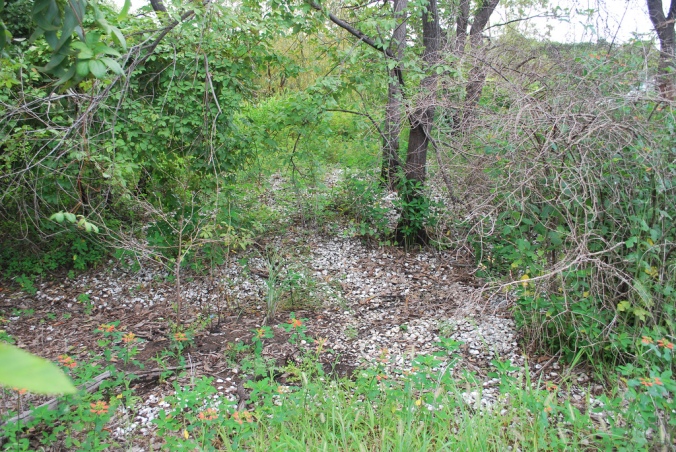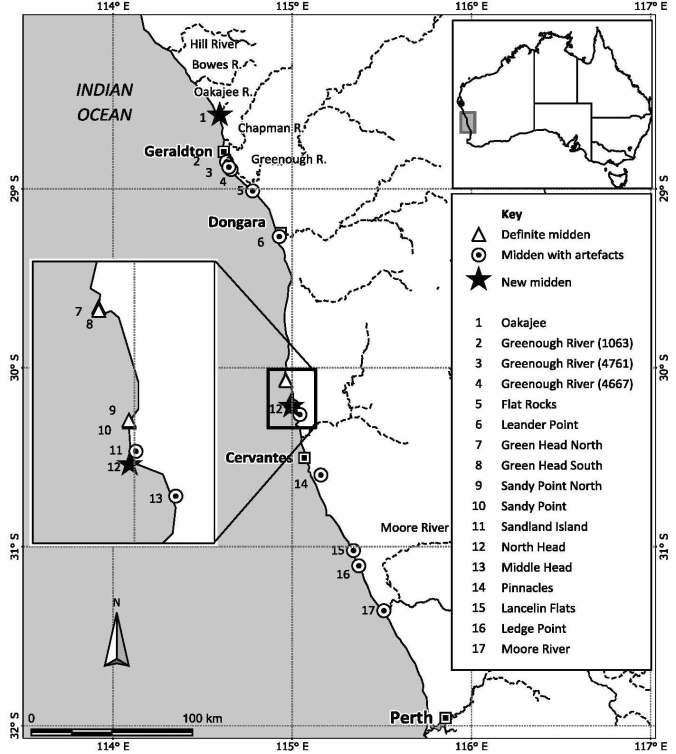“The natural landscape is being subjected to transformation at the hands of man [sic*], the last and for us the most important morphologic factor. By his cultures, he makes use of the natural forms, in many cases alters them, in some destroys them.” – Carl O. Sauer (1925).
Along the coastlines of northern Australia – hidden in mangroves, rising up from flat coastal plains, and lining narrow tidal creeks – mounds of shell reach up to 12 metres in height. The landscape is peppered with these distinctive relics of cultural activities. But beyond providing a tangible, conspicuous link to the past, how do these shell mounds influence the surrounding cultural and physical landscape?
When archaeologists or anthropologists use the term “cultural landscape”, what we are referring to is the space in which human groups – past or present – operated, and the relics of cultural practices on the natural landscape. As the quote from Sauer notes, humans have a transformative effect on the environment, modifying the natural condition of an area by their presence. These effects are many and varied, and are visible in most landscapes across the globe.

A shell mound from Weipa, photographed in 1958. Image via National Archives of Australia.
Landscape modification takes many different forms, and has many different impacts on people and ecosystems. In coastal landscapes, for example, shell mounds and middens range from sparse shell scatters resulting from a single meal, to huge hillocks that show continual, prolonged use by large groups of people. The impacts of these sites and associated cultural activities are just as varied.

Gumbaloo gathering shellfish at low tide, Liverpool River, Arnhem Land, Northern Territory, 1952 Axel Poignant. Image via National Library of Australia
Shell mounds and middens are evidence of the collection and use of marine or freshwater shellfish. While many people exploit shellfish, it is hunter-gatherers who are most commonly associated with the creation of these landscape features. Shell middens and mounds form when people discard shellfish remains, often creating large mounds that incorporate other waste materials such as seeds, animal bones and broken tools. They are evidence of people’s use of these coastal margins: the foods they ate, the environments they favoured, and sometimes even the time of year they were there. But one of the characteristics that makes these sites so valuable – the robust nature of marine shell – also makes them distinctive features of the coastal landscape.

Baja California (shown in red). Image via Wikimedia Commons.
If we look at shell mound sites in North America, we can begin to understand how people’s movement of resources – such as marine shell – from one place to another can directly influence the physical landscape. In a recent paper, a Californian/Texan research team investigated the relationships between aragonitic shell middens and plant biodiversity in the Baja California Peninsula. These shell middens are the material remains of the exploitation of marine shellfish from the rocky headlands and sandy beaches some 3000-5000 years ago. This research shows the extent to which the simple activity of collecting (and then discarding) shellfish has modified the local ecosystems which incorporate these remnant midden complexes.
Along the Baja Peninsula, high, steady winter rainfall has leached calcium from the discarded shells over several thousand years, altering the chemical properties of the soil around the middens. The study’s authors tested the hypothesis that this altered soil chemistry affected the plants that grew on and around the midden sites. By assessing the vegetation growing on the middens on the low-lying floodplain, they were able to identify stark differences in plant diversity between the naturally saline, high-sodium soils of the surrounding floodplain, and the aragonite-laden soils of the middens.
As the study’s authors note: “deposited during the Holocene, the shells have been weathered, and new anthropogenic soils have formed that show unique soil signatures and plant communities.” These new soils are the indirect result of human activity – certainly the creators of the middens didn’t intend for these soils to form, and in fact, the soils haven’t formed in similar sites further inland where rainfall is far lower. But the result of the collection and mass discard of marine shells by late Holocene people living in the Baja Peninsula, combined with the steady, winter-wet climatic conditions, has created a unique environment where plants have been able to colonise and thrive in areas in which they would not otherwise have succeeded.

Shell mound covered in vegetation, Cape York Peninsula. Image via Mick Morrison, used under Creative Commons.
Did the same process happen in Australia? Whether or not the slow breakdown of shells fundamentally altered soil in coastal landscapes like Weipa, on the Cape York Peninsula, shell mounds do have other attributes that have altered the ‘natural’ landscape. Middens and mounds might be primarily made up of discarded shell, but they also contain other discarded items, including seeds and pits from plants. In Cape York, research indicates that many shell mounds are the sites of ‘gardens’ or ‘orchards’ created over time as people have brought fruits and other plants into the site and discarded the scraps. Similarly, the mounds can act as ‘islands’ which contain ideal growing conditions for some plants in an otherwise inhospitable landscape. Some researchers have argued that the creation and curation of these orchards and gardens was a form of cultural manipulation of plant resources, a process they called ‘domiculture’.
Does this mean people were intentionally bringing these plants into the shell mound sites to create these orchards? The evidence is far from conclusive. However, there was certainly an ecological consequence of people’s actions, even just on a very local scale. Physical geography was altered by the accumulation of shell, which may also have altered soil geochemistry. People brought plants from other parts of the landscape, and discarded scraps, including seeds and nuts, in the midden piles. Some of these germinated, creating patches of plant resources that may not have otherwise been present in that location. And people likely benefitted from the development of these orchards, as plant foods then became available for collection and use closer to other important resources.
So does what does this all mean for the traditional dichotomy of the natural vs. the cultural landscape? One of humanity’s defining characteristics is our ability to exploit, alter, and permanently change the natural world. The result is a blurring of the lines between nature and culture. How widespread and influential have these cultural alterations been on natural landscapes? That remains to be seen, but it is increasingly clear that interpretations of small scale hunter-gatherer societies as leaving no lasting environmental footprint are naive at best. Shell mounds are only the tip of the iceberg!
References and Further Reading:
Moore, J.D. 1999, ‘Archaeology in the Forgotten Peninsula: Prehistoric Settlement and Subsistence Strategies in Northern Baja California’, Journal of California and Great Basin Anthropology, vol. 21(1): 17-44.
Morrison, M. 2014, ‘From scatter to mound: A new developmental model for shell mound sites at Weipa’, Queensland Archaeological Research, vol. 16: 165-184.
Vanderplank, S.E., Mata, S. and Ezcurra, E. 2014, ‘Biodiversity and Archeological Conservation Connected: Aragonite Shell Middens Increase Plant Diversity’, BioScience, vol. 64(3):202-209.
To read more about Michael Morrison’s research into the Weipa shell mounds, visit his blog.
*As a staunch advocate for the use of gender inclusive language, I do consider it necessary to note that Sauer’s statement uses ‘man’ where we would now use ‘humankind’. It may seem innocuous, but in archaeology, particularly in pre-historic archaeology, it leads to a phenomenon of invisible women. I could go on, but perhaps that’s something for a future post!


